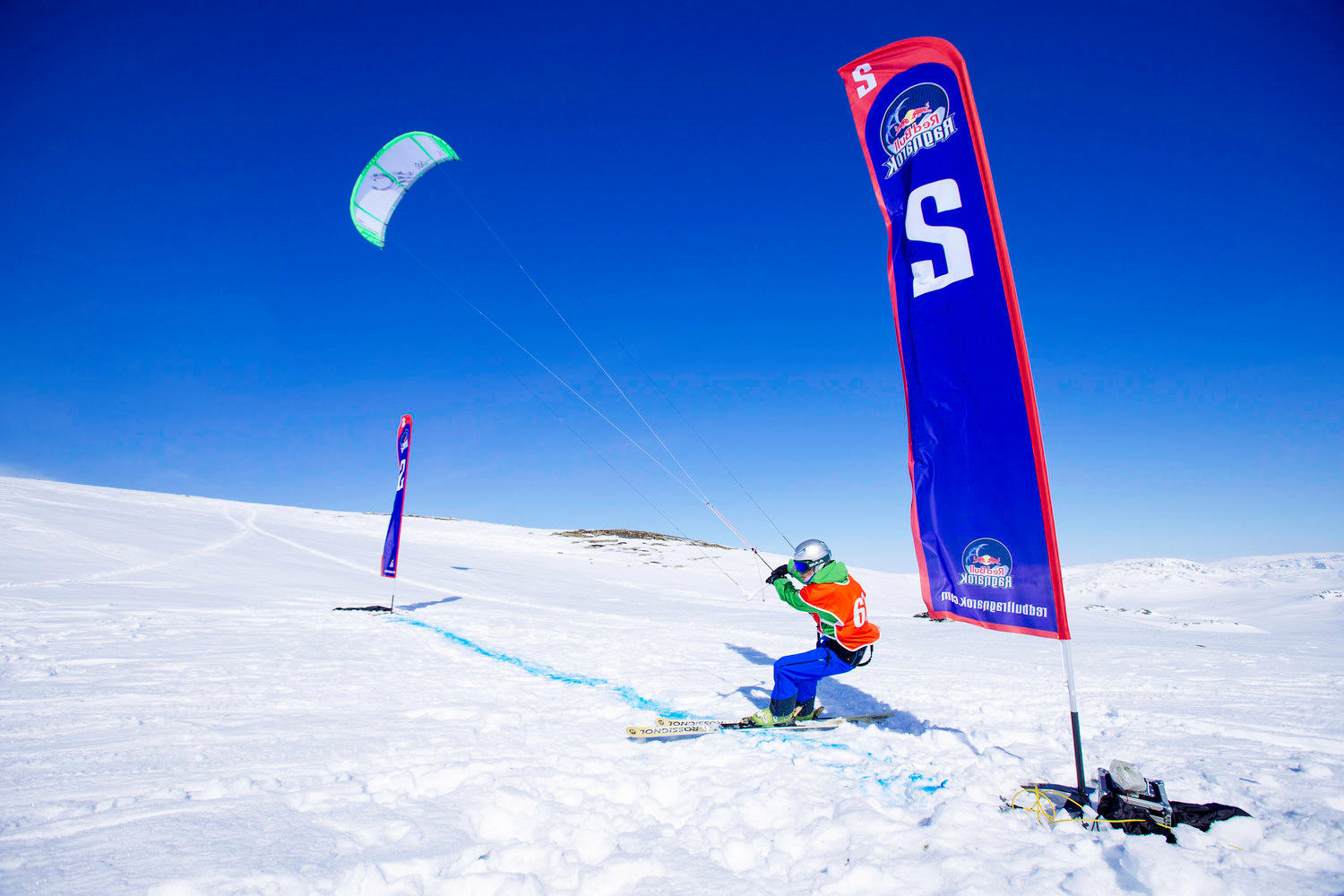
How to choose right skis for snowkiting
February 18, 2025Norwegian snowkiter Thomas Lone has medals in freestyle and race and owns skis for every condition and purpose. Read his ski guide to select the perfect ski gear, whether you want to do tricks, kite up mountains, race or a mix of everything.

What skis do you normally use for kiting?
– My favourite pair of skis are Atomic Punx, which is a versatile twin tip ski. I have accumulated some fair pairs of skis over the past 10 years, so I can select the optimal gear for different conditions.
What is important to keep in mind when selecting skis for snowkiting?
– Length is important! The ski will be difficult to manoeuvre if it is too long. However, a ski that is too short will not provide desired support, especially in bumpy and uneven terrain. Choose skis that are a bit shorter than what you normally use in the slopes. They should reach to somewhere between your chin and nose.
– Width between 80-85 mm for women, and 80-90 mm for men, is a good choice for most conditions. You will be able to maintain an edge comfortably and at the same time float well on all kinds of snow (ice, compact snow and powder).
– A soft ski gives a better “pop”, if you want to jump and do some tricks. Small sidecut radius (as little as possible), because we usually kite straight back and forth, and we want our skis to hold a steady course.
– Small sidecut will also make it easier to hold your edge.
Equipment

What is important to remember when selecting bindings?
– The skis we use for snowkiting, often in challenging and “off-piste” terrain, are often originally constructed for “regular” use in ski resorts. The bindings are your insurance from breaking a leg in the mountains, far away from civilization. We recommend ski release bindings. These bindings release in case of a fall to prevent injuries. However, we usually hold a slower speed than in the ski centre. Hence, we don´t need the heaviest bindings. Go for quality, and choose a light, solid binding!
– I prefer to mount my bindings a bit more forward on the skis, compared to what I do on my regular downhill skis. Experiment, and find out what suits you best!
What boots are the best for snowkiting?
– Choose a comfortable pair of ski boots. We often snowkite for hours, and we want a shoe that is big enough to maintain the blood circulation and stay warm. Choose a stiff boot for race and speed. For freeride and freestyle, choose a medium stiff boot: If the boots are too stiff, you will loose flexibility to jump and do tricks. But if they are too soft, you can´t edge, and you will have minimal response to your movements.

What are the best skis for race?
– For regatta and race you need long skis with as little sidecut as possible. Check if you find something second hand. Super-G or downhill skis with no sidecut and length over 220 cm can go over 100 km/h with the right wax. Note that racing skis have few other riding uses than race.
What about for freeride, freestyle and tricks
– Look for a soft ski with the perfect length, described in question nr 2.
.. and kiting up mountains and kiting expeditions?
– This combination is growing and becoming more popular. The possibility of using the kite to get up to the top of mountains, or go on expeditions with a sledge, tent and a kite, gives extraordinary nature experiences. Last year, I kited over Jotunheimen* with randoneè (alpine touring) skis. The randoneè bindings work surprisingly well for snowkiting! Don’t buy the lightest pair of ski, as these are too flexible and unstable for kiting.
* Jotunheimen is a mountain plateau in Sourthern Norway.
Check list: Skis for snowkiting

Carving: Not optimal. These have too much sidecut and will turn when you try to hold an edge.
Twin tip: The best all-round choice for snowkiting. They are flexible, have minimal sidecut and offers good manoeuvrability.
Telemark: This can be a challenging choice. We hardly do turns with our skis when we are snowkiting, thus, the loose heal is only a disadvantage when you are trying to edge.
Alpine: You can definitely kite with your old alpine skis in the beginning! You might want to invest in a pair of twin tips if you are planning to snowkite more than once a year 😉
Cross country: Unstable and difficult to kite with.
Alpine touring (randoneé): The most recent super light skis are too soft and unstable for kiting. Alpine touring skis can be great when choosing a more robust model. Your kite will take your mountain hikes and expeditions to the next level!
Powder: The powder will usually drift away before we have the chance to enjoy it kiting. Powder skis are difficult to manoeuvre on compact snow, and they will not hold the edge as well as other skis.
NEWSLETTER
Stay up to date, sign up for our newsletter

Maren Gimnes
Maren is a copywriter and content creator with a true passion for exploring the beautiful planet we call home. Her love for the ocean and salty days brought her to Lapoint, where she’s been living the digital nomad life and visiting our surf camps in all corners of the world. Maren aims to inspire others to pursue the surf lifestyle, to never miss a sunset and to follow their dreams.

